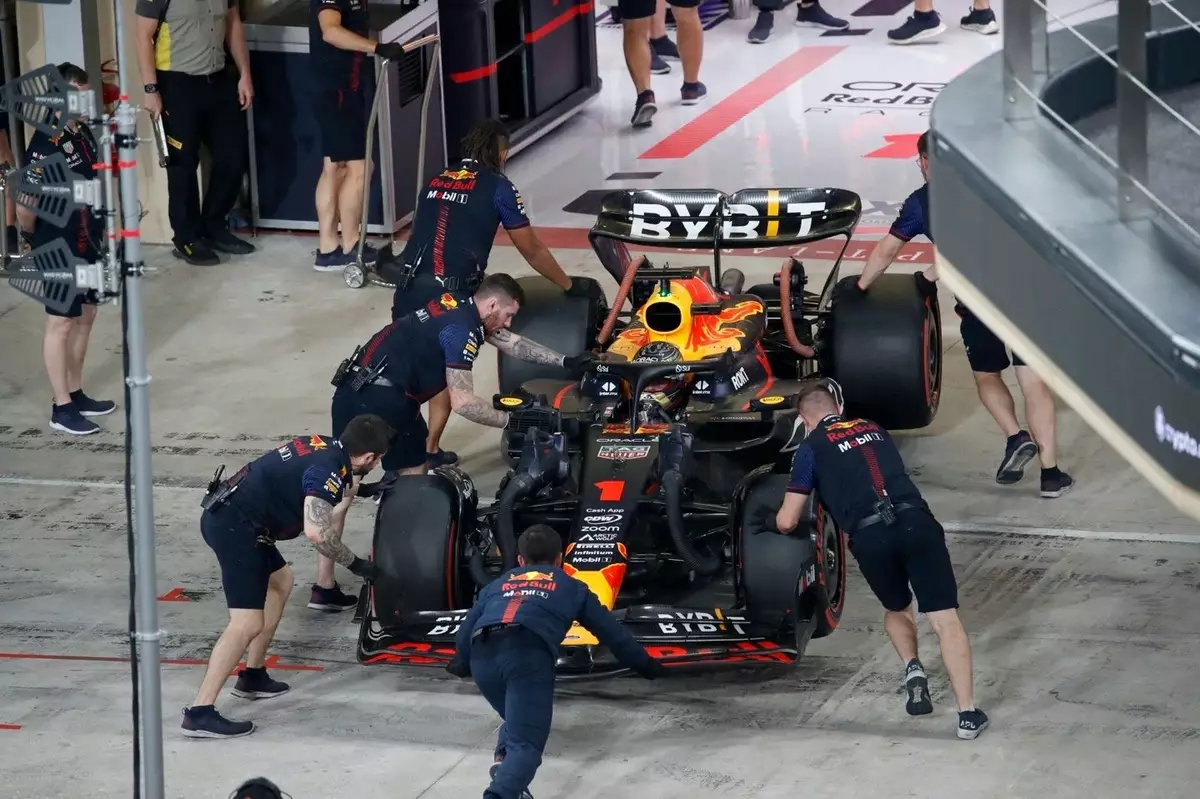The realm of Formula 1 has always been characterized by innovation, rivalries, and meticulous regulations. Recently, the spotlight has turned towards the Red Bull Racing team amidst rising speculation surrounding a device designed for adjusting the front bib height of their cars. This situation not only raises questions about mechanical ingenuity but also challenges the integrity of regulatory frameworks set by the FIA, highlighting the dynamic interplay between technology and governance in high-stakes motorsport.
As the Formula 1 circus made its way to the United States Grand Prix, whispers in the paddock grew louder regarding Red Bull’s potential exploitation of ride height adjustments through a device accessible from the cockpit. These rumors reached a crescendo when the FIA announced it would be implementing new measures to ensure compliance with parc ferme regulations, which prevent teams from making changes to their vehicles after qualifying until the race concludes. Central to this discussion was the device in question, which could theoretically allow for adjustments that would violate these sacred rules.
The FIA’s concerns stemmed from feedback received from other teams wary of the implications that such a device could hold. These fears were validated by the revelation that, through their open-source design submissions, Red Bull had inadvertently exposed some inner workings of a device that might give them a competitive edge. While technical innovation is the lifeblood of Formula 1, it poses ethical dilemmas when perceived regulatory lines are blurred.
At the heart of this controversy lies a complex web of regulations governing the operations of Formula 1 teams. The concept of parc ferme is designed to level the playing field, maintaining fairness by restricting vehicle modifications once qualifying begins. This principle is crucial, as it prevents teams from gaining an unfair advantage through last-minute tweaks. In light of Red Bull’s rise to dominance in recent seasons, any hint of exploitation ignites fierce scrutiny from both competitors and regulatory bodies.
The FIA has initiated a clampdown in response to these revelations, implementing measures such as fitting seals on adjustable components to hinder any potential manipulation during the restricted periods. These developments not only concern engineers and mechanics but also deeply impact the strategists who navigate the intricacies of race-day decisions. Should a team be found in violation, the penalties could be severe, impacting championship standings significantly.
Red Bull’s Defense and FIA’s Investigation
In the face of mounting allegations, Red Bull has vehemently denied any wrongdoing. A representative emphasized that while the device exists, it is inaccessible once the car is operational, thus remaining compliant with the regulations. This assertion reflects a broader principle in the world of motorsport: the necessity of transparency and communication between teams and governing bodies. Clarity helps uphold the sport’s integrity, allowing for healthy competition rather than a perpetual state of suspicion.
The FIA’s investigation into Red Bull’s practices has underscored the importance of vigilance in the sport. While they found no direct evidence of rule violations as of the latest race weekend, they are keen to ramp up monitoring measures to preempt any circumvention of regulations. This commitment to accountability is vital, as it reinforces the notion that all teams must operate within established boundaries, regardless of their on-track success.
As the focus shifts toward a titanic battle for the championship, particularly between Red Bull and McLaren, the implications of this controversy extend far beyond the garage. It serves as a sobering reminder of the responsibilities shouldered by all competitors in maintaining the sanctity of the sport. The collaboration between teams and the FIA will be crucial in addressing and managing potential concerns regarding technical innovations.
Moving forward, teams must balance the fierce competition inherent in Formula 1 with the abiding requirement of ethical conduct. The sport thrives on technical advancements that push engineering limits, but it must also preserve fairness and integrity. Striking this balance will be essential in fostering the continued evolution of Formula 1 as both a sport and an engineering showcase, ensuring that innovation does not come at the expense of its foundational principles. As the season progresses, all eyes will remain on Red Bull, the FIA, and the broader implications of these developments in the fascinating world of Formula 1 racing.


Napsat komentář